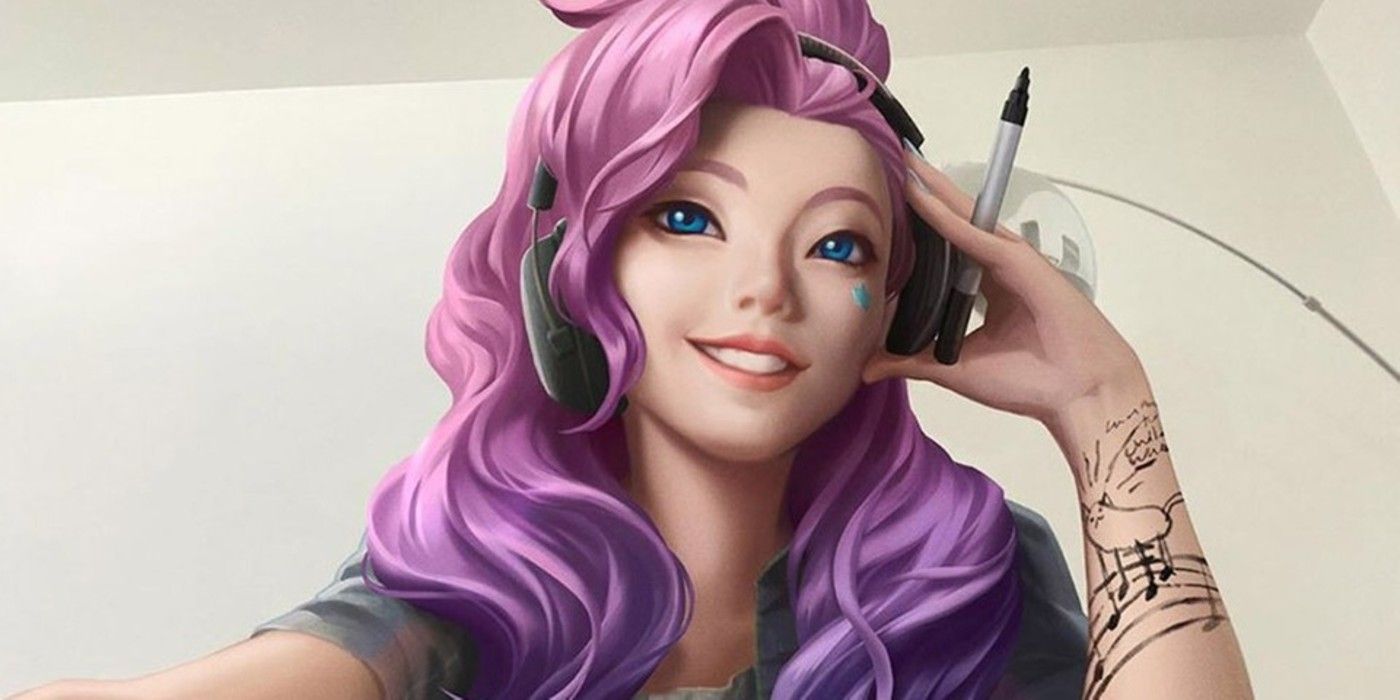Riot Games has issued a statement concerning recent controversial social media posts from its new League of Legends character Seraphine. This is far from the first time Riot has found itself embroiled in controversy; earlier this year it tried to strike a sponsorship deal with NEOM, a city project in Saudi Arabia. Fans were understandably upset that Riot was willing to be sponsored by a country infamous for horrifying anti-LBGT policies and for a total lack of free press. In the face of such widespread rage, Riot swiftly pulled out of the deal and established an ethics committee in an effort to prevent further blunders.
Since then, Riot went mostly controversy-free, until the appearance of Seraphine. The game's new hero was introduced in the real world as an online influencer with her own social media presence. She was quickly tied into the overarching League of Legends narrative through a partnership with K/DA, a fictional K-pop group composed of four pre-existing League characters with special skins. As Seraphine became more and more prominent on social media, fans found more and more about her to take issue with. Many accused Riot of putting more work into her social media marketing scheme than into her actual moveset, which bore striking similarities to a pre-existing champion in the game. Riot also seemed to have put more thought into her non-canon social media presence than into her actual in-game backstory, which bore a lot of inconsistencies that were quickly picked apart by fans.
Seraphine was the center of still more controversy when she began sharing her battle with mental illness and anxiety, going so far as to request encouraging words on Twitter on Mental Health Day. As Polygon reports, this outraged fans, and with good reason. Seraphine is, after all, an entirely fictional character, and her social media presence exists solely for marketing purposes. For what is essentially a giant, interactive advertisement to take up space in the discussion about mental health is short-sighted at best and actively harmful at worst. Riot creative director Patrick Morales responded to the outrage, stating that "I’m personally proud of the people on our team... but we also recognize that the story we chose had an unintended impact outside of the narrative that we were trying to tell." Seraphine's anxious tweets were written by Bethany Higa, who channeled her own issues and anxiety into the tweets. She said "The intention behind the story was to show that sense of hope, that sense of persistence, and show her growing in confidence and overcoming those struggles and those fears that she might have."
It's a complex issue, to be sure. There's something to be said for giving writers like Higa a chance to channel their struggles and anxieties into a project like this; video game development can be a deeply personal thing, and there's definitely nothing wrong with that. But Seraphine was not designed to channel self-doubt issues, she was designed to get people to play League of Legends. When people look at her social media account, that's what they're seeing. The personal struggles of the people writing her will always take a backseat to that.
It's unfortunate that Higa's very real and very legitimate struggles have been channeled into such a controversial mess. It's proof of just how complicated PR can be in the video game industry. Riot surely didn't intend to enrage fans with Seraphine, but unfortunately, that's the effect that the new League of Legends champion is having.

